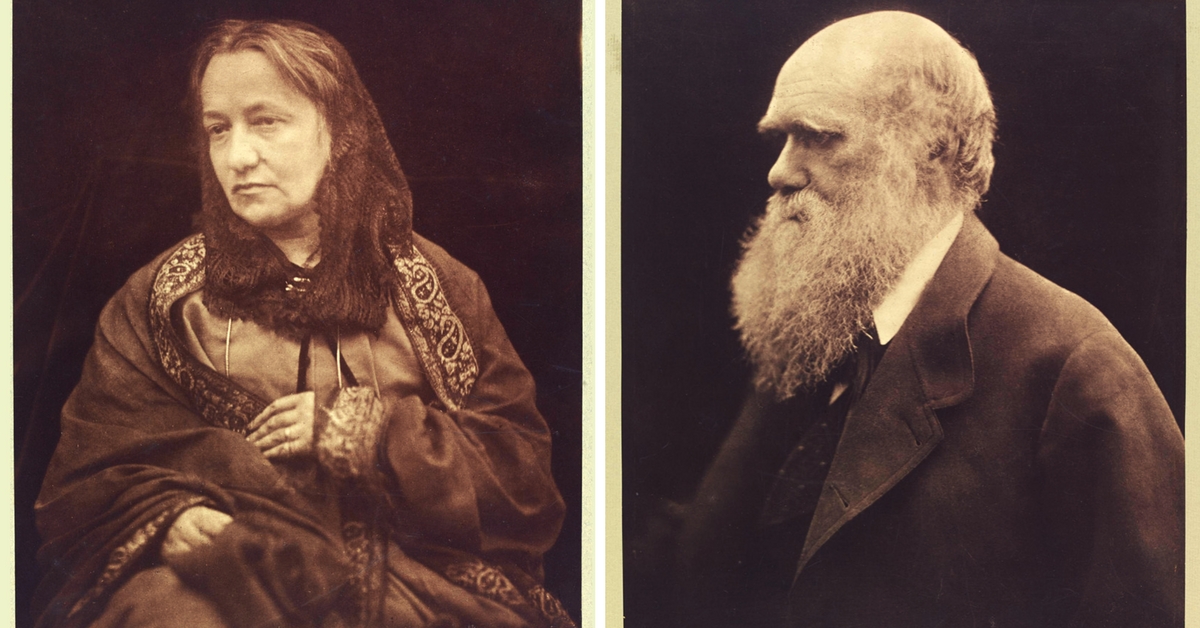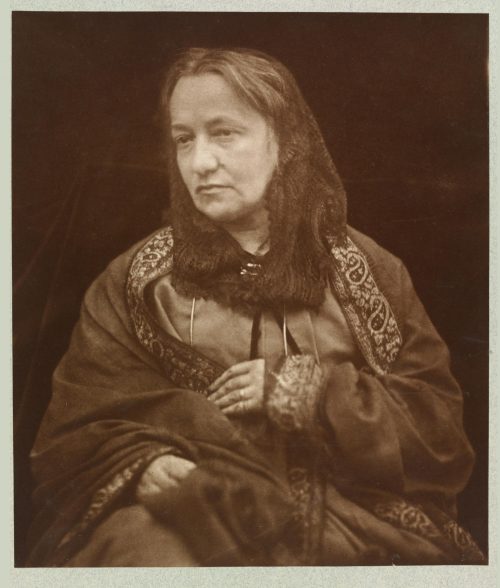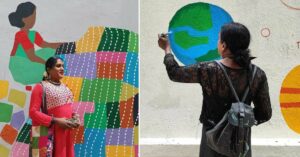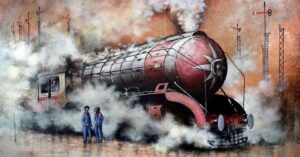Years Ago, a Calcutta-Born Photographer Captured Charles Darwin, Alfred Lord Tennyson & More
Julia Margaret Cameron, was a seeker of beauty. She was born in India more than 200 years ago in the City of Joy, Calcutta, in 1815, but her rebirth as a photographer happened at the age of 48.

“Oh, Mystery of Beauty! Who can tell
Thy mighty influence, who can best descry
How secret, subtle and swift is the spell
Wherein the music of thy voice doth lie?”
The composer of the above verse, Julia Margaret Cameron, was a seeker of beauty. She was born in India more than 200 years ago in the City of Joy, Calcutta, in 1815, but her rebirth as a photographer happened at the age of 48, when her daughter and son-in- law gifted a sliding box camera to her, “It may amuse you, Mother, try to photograph during your solitude at Freshwater.”
The Christmas present that was meant for amusement turned to be a serious adventurous exploration and in the decade that followed, she created a body of work that still mesmerizes.

Born in a well-to-do family to Scottish father James Pattel, a British East India Company official, and French aristocrat mother Adeline de l’Etang, she was fluent in French, English and Hindi and often spoke in Hindi with her sisters. On her tour to South Africa with her family, she met two of the most important people of her life, her future husband Mr. Charles Hay Cameron, a jurist who had collaborated with Lord Macaualy on drafting Indian Penal Code as well worked on other law and education reforms in India, and her mentor Sir John Herschal.
“I began with no knowledge of the art,” wrote Julia. Photography was then in its infancy, it was an arduous task for Cameron to deal with a bulky camera with a tripod, exposure that lasted for 3 to 8 minutes and handling hazardous chemicals like cyanide. But the Victorian photographer’s indomitable spirit made her surmount all odds of the beginner and transformed her into an artist with a unique style.
Her unconventional style of soft focus, streaks, smudges and scratches became the hallmark of her photography.

She turned her coal house into a dark room and a glazed fowl house into a glass room. Within a few weeks, she rejoiced in the revelry of her first successful portrait, she was so happy that she searched the entire house for the choicest gift for the little model Annie Philpot. She practiced the wet collodion process and made egg-based contact prints from the glass negative. The erstwhile fowl house became her den where she arrested poet, prophets, painters and other luminaries, including her friends, family and neighbors, in front of her camera.
The pioneering photographer was also a prolific letter writer. Apart from others, she regularly corresponded with Sir John Herschel, who coined the term photography. He kept her abreast with the latest development in photography. She wrote in reverence to him “you were my first teacher and to you I owe the first experience and insights.” She partly named her youngest son Herschel after him, who also became a photographer.
She was a great portraitist and photographing great souls was an embodiment of prayer and reflection of their inner self.

Some of the distinguished people she photographed were the scientists Charles Darwin and Sir John Herschel; the poets Robert Browning, Henry Taylor, Alfred Lord Tennyson, and Henry Longfellow; the painter G. F. Watts, Marianne North and Marie Spartali; and the historian and philosopher Thomas Carlyle. Famous Shakespearian actress Ellen Terry, noted writer Annie Thackery and Alice Liddel, the muse of Lewis Carrol’s Alice in Wonderland were also photographed by her. The famous American photographer, Imogen Cunningham, had commented “I’d like to see portrait photography go right back to Julia Margaret Cameron. I don’t think there’s anyone better.”
A pre-Raphaelite aesthete with a quintessential Victorian soul, her images was seeped in biblical stories, literature, paintings and poetry. From St. Agnes to Sappho, Madonna to Merlin, Beatrice Cenci to Browning’s Sordello, Iago to Idylls of the King and others found a place in her oeuvre. She illustrated the Arthurian poem Idylls of the King when requested by her neighbor, Alfred Tennyson.
She also harboured literary pursuits – published poetry and translated German. Literature might have been her first love but it was with photography that she had a rebellion romance.

Her romance with photography also resulted in marriage between a gentleman and one of her maid-cum-muses. According to Cameron’s account Mr. Cotton fell in love with her maid Mary Ryan after looking at one of her photographs. The premier Cotton College of Guwhati is named after him. She raised Mary Ryan, whom she found in an impoverished condition, along with five children of her own and five children of her relatives. A benevolent woman and generous hostess, while in India she served as a society hostess to the governor general Lord Hardinge, and many eminent friends were guests at her home, especially at Freshwater.
The famous author Virginia Woolf wrote her only play based on her great aunt Julia Margaret Cameron and her Freshwater circle titled ‘Freshwater.’ The house they lived in at Freshwater, named Dimbola Lodge after their coffee plantation estate in Ceylon, is now a museum permanently dedicated to life and works of Cameron.
The Victoria and Albert Museum celebrated her bicentenary and the 150 years of the only exhibition in her lifetime, to whose founding owner, Mr. Cole, she had sold her photographs. Apart from the photographs, The Royal Photography Society of London, still treasures a Jamin lens she used. Dr. M.Pritchard, Director General, RPS, rightly remarked, “She created a new aesthetic and was a female photographer who was successful role model for other women photographers and she inspired and influenced other women”.
Critics of the day were not favourable to her unorthodox ways, but her attempt to ennoble photography as a high art found a voice among the photo secessionist.

In the ebb of her life, she, along with her husband, moved to Ceylon owing to financial and health issues. She photographed the natives but her overall engagement with photography declined. Probably as an artist she knew had accomplished a body of work that would stand the test of time. A fragment of her unfinished autobiography “Annals of the Glass House” mentions, “I longed to arrest all the beauty that came before me and at length the longing has been satisfied.” It was published posthumously. The seeker of beauty was snuffed to eternal silence on January 26, 1879, but the last word she whispered was “beautiful”. A word that often describes her work as a photographer.
(Written by Rajiv Runthala)
Like this story? Or have something to share? Write to us: [email protected], or connect with us on Facebook and Twitter.
NEW: Click here to get positive news on WhatsApp!
This story made me
- 97
- 121
- 89
- 167
Tell Us More
We bring stories straight from the heart of India, to inspire millions and create a wave of impact. Our positive movement is growing bigger everyday, and we would love for you to join it.
Please contribute whatever you can, every little penny helps our team in bringing you more stories that support dreams and spread hope.



















